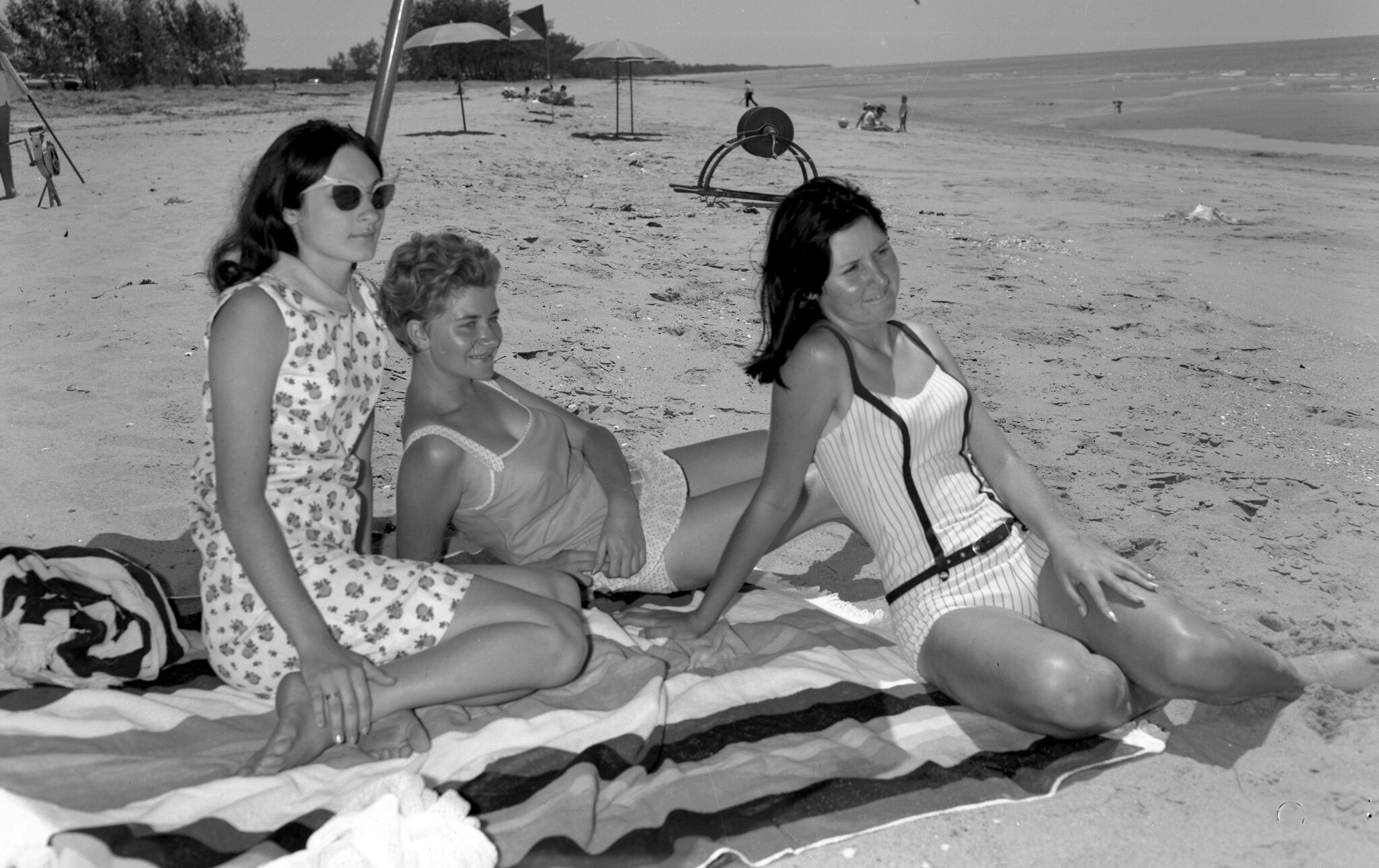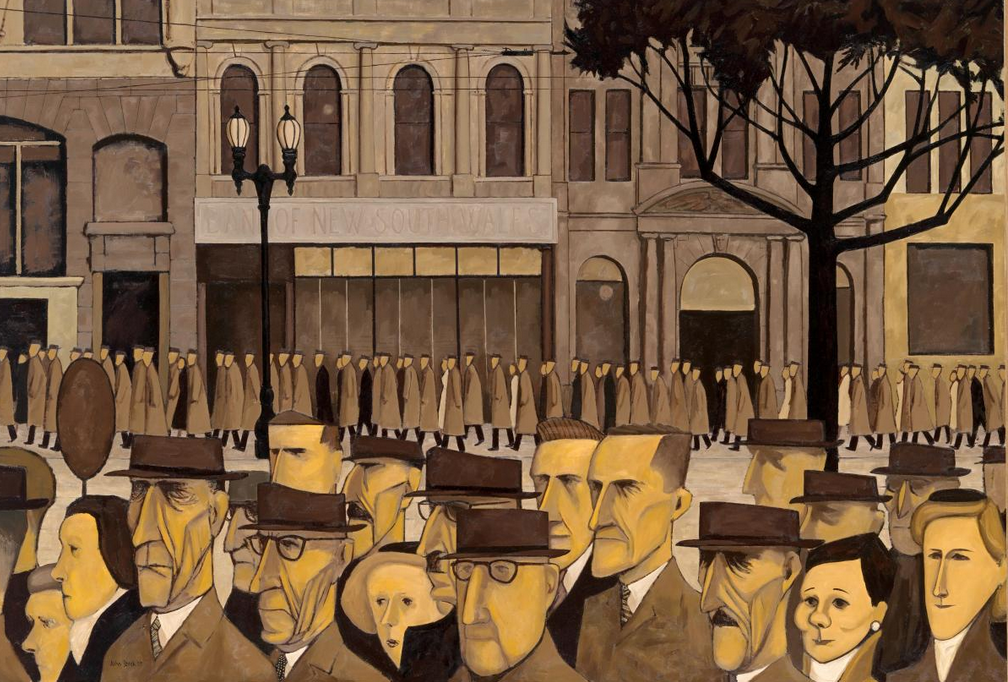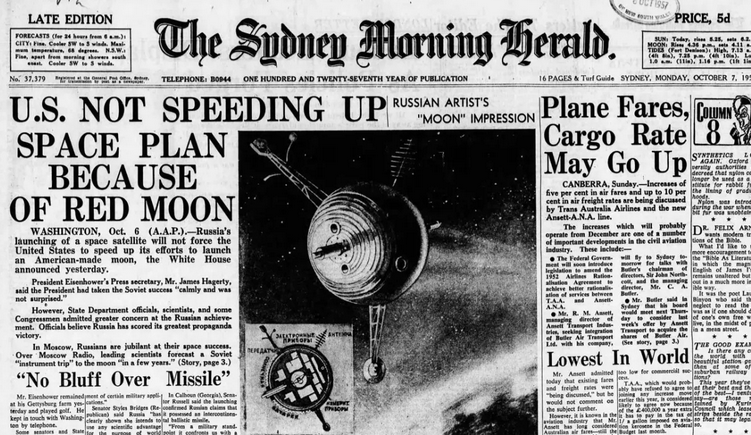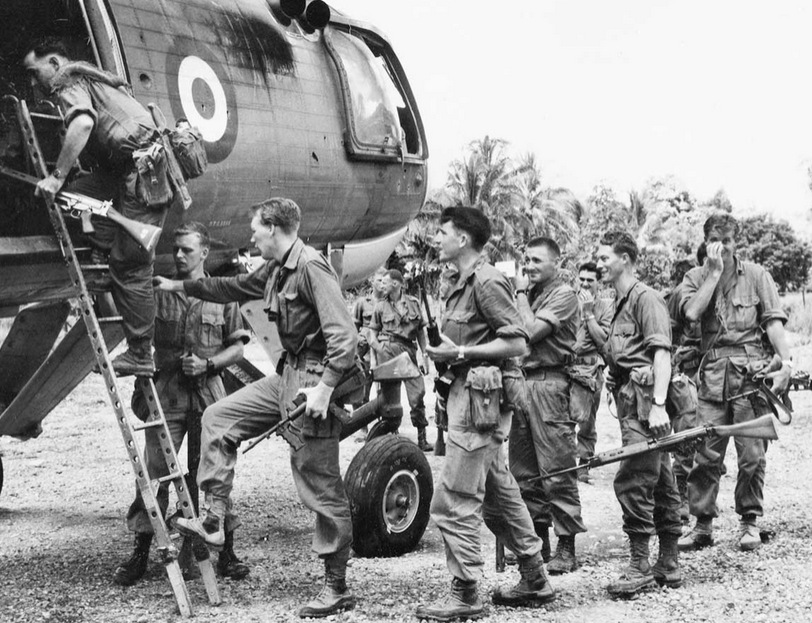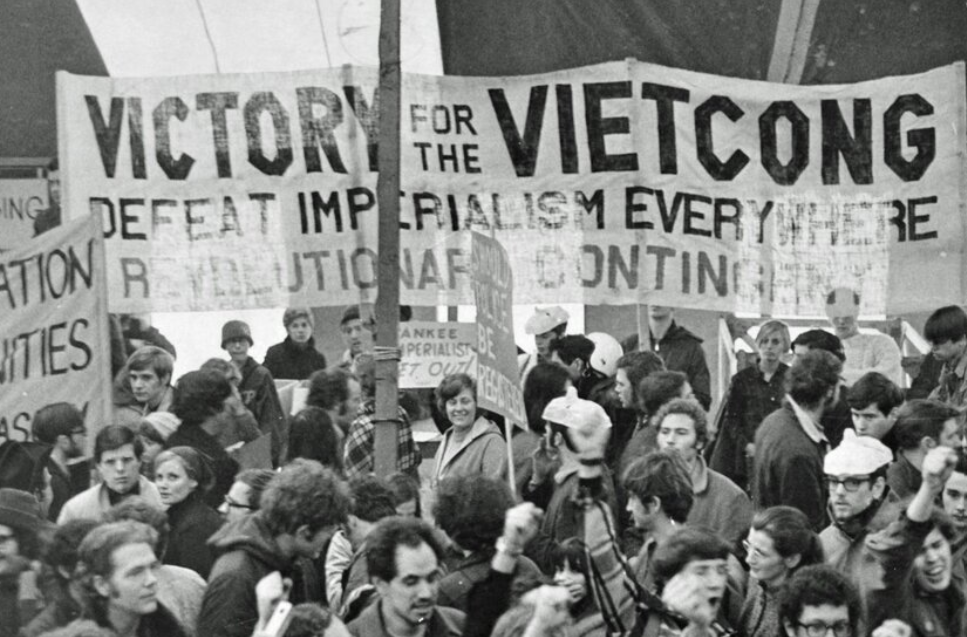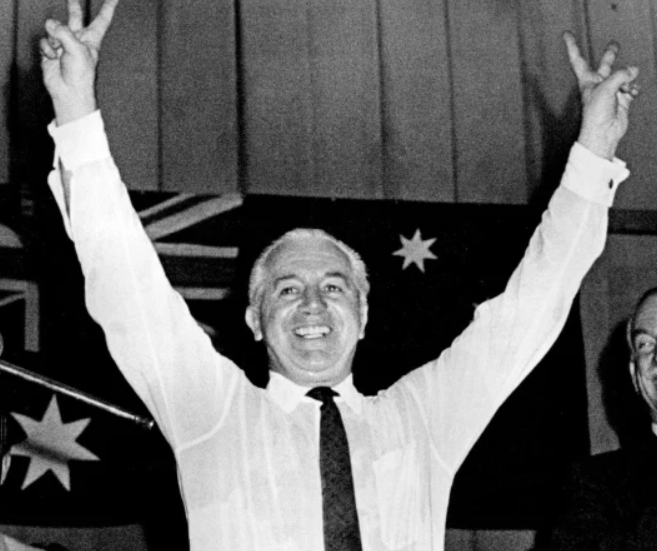What Really Happened in the Sixties
The history of the Sixties has been outlined by Helen Trica in The Australian as part of its 60th Anniversary celebrations. (‘“If you remember the 60s, you weren’t really there”) Really?’ This article offers an alternative interpretation that ties the Sixties directly to the current cultural and political crisis.
Cultural Revolution In recalling the 1960s the most essential thing to understand is the impact of the ‘Sixties Cultural Revolution’ that reached a crescendo between c.1965 and c.1974. Crucially, it involved the Baby Boomer Generation (BBG), which constituted a huge demographic bulge that came of age in a period of massive change, unprecedented affluence, and demographic, sexual, and educational revolutions, but was then exposed to a bewildering array of radical theories and lifestyle choices.
Paradox And at the centre of this revolution was a paradox – the co-presence during the Sixties of exuberant hope and deep anxiety. On one hand, the Sixties were born out great optimism, heralded by the election of US President John F. Kennedy in 1960. He christened his administration ‘The New Frontier’. As one leading historian observed:
John Kennedy had a vision …. He wanted prosperity and happiness for the world’s people and … took office at the moment when America’s optimism was at its zenith. He believed it was possible … simultaneously to take the offensive in the Cold War, accelerate the arms race, eliminate poverty and racism, lower taxes and ‘pay any price’ … to achieve these goals. Most Americans agreed. — Stephen E. Ambrose, Rise to Globalism, 1993
Affluence & Stability Most Australians agreed too; like America, ours was then a frontier society, eager for new challenges. We were also enjoying the benefits of the unprecedented post-war economic boom and long-term stable political leadership. This was exemplified by Sir Robert Menzies, a monolithic national presence who was Prime Minister from 1949 until 1966. After his retirement, there were four prime ministers in the next five years, a collapse of national leadership right in the middle of the Sixties, which proved to be a pivotal period of political and cultural crisis
Shifting Alliances We were also shifting our allegiance from the United Kingdom, which was struggling economically and politically, and rapidly shedding its Empire in an attempt to embrace Europe. Feeling isolated in an unstable and threatening region, we were moving on to the United States, which had assumed energetic global leadership of the ‘Free World’ under Kennedy.
‘One Brief, Shining Moment’ Kennedy was perceived as a charismatic and inspiring figure who brought youthfulness, vibrancy, and hope to global politics. Indeed, his presidency was likened to the mythical Camelot of King Arthur. Later, his widow famously quoted a line from the musical of that name: “Don’t let it be forgot, that once there was a 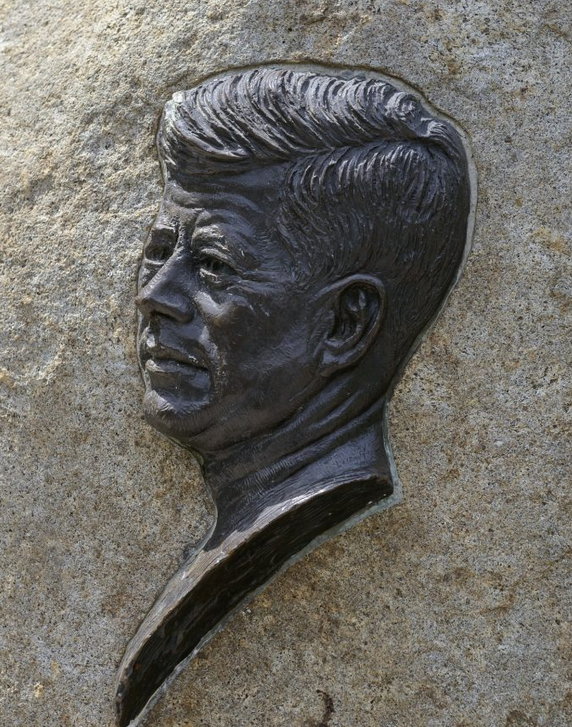 spot, for one brief, shining moment, that was known as Camelot.” He was especially liked in Australia and his assassination in November 1963 was therefore a great shock and prompted the Melbourne City Council to erect a monument to him in the Treasury Gardens (right), adjacent to Victorian Parliament House. An official war artist was commissioned to create a bronze bas relief set in a granite boulder, surrounded by natural rocks, plants and slate surroundings. The inscription reads: ‘This memorial signifies the grateful recognition by the citizens of this city for the service given by John F. Kennedy as President of the United States of America 1961–1963’. This was an unprecedented act for a foreign head of state. It reflects the fervent hopes that flourished under his presidency (and died with him, as it transpired).
spot, for one brief, shining moment, that was known as Camelot.” He was especially liked in Australia and his assassination in November 1963 was therefore a great shock and prompted the Melbourne City Council to erect a monument to him in the Treasury Gardens (right), adjacent to Victorian Parliament House. An official war artist was commissioned to create a bronze bas relief set in a granite boulder, surrounded by natural rocks, plants and slate surroundings. The inscription reads: ‘This memorial signifies the grateful recognition by the citizens of this city for the service given by John F. Kennedy as President of the United States of America 1961–1963’. This was an unprecedented act for a foreign head of state. It reflects the fervent hopes that flourished under his presidency (and died with him, as it transpired).
The Lucky Country At the time, Australians saw themselves as The Lucky Country, as Donald Horne’s famous book declared in 1964. Oddly, the title had been meant ironically and referred to the way in which Australians were enjoying an ever-growing but un-deserved affluence, generated by the vast material wealth of the land rather than by our own efforts or enterprise. The book was also a criticism of the complacency, philistinism, anti-intellectualism, wowserism, spiritual bankruptcy, and dependency on ‘Great Powers’ that Horne believed characterized Australia. Nevertheless, the term was (predictably) accepted at face value and adopted as a sort of national motto.
The Great Chasm This positive re-interpretation of Horne’s negative critique reflected one of the most important features of Australian culture – the chasm that exists between intellectuals, who were invariably critical of Australia, and the masses, who don’t care what the intellectuals think and just want to get on with enjoying life as they see it. Various attempts have been made to explain the origins of this split and most focus on the tendency of frontier societies like Australia, through their formative years, to value pragmatism and the ability to engage productively with the concrete here-and-now, rather than be pre-occupied with more abstract matters like culture and ‘airy-fairy’ theories. Heading into the Sixties, Australia was notorious for its anti-intellectualism.
The Great Australian Emptiness Intellectuals were driven crazy by this indifference to their opinions, and they embraced the politics of cultural despair. As Patrick White, Australia’s only winner of the Nobel Prize for literature, lamented upon his return from Britain in The Prodigal Son (1961):
In all directions stretched the Great Australia Emptiness, in which the mind is the least of possessions, in which the rich man is the important man, in which the schoolmaster and the journalist rule whatever intellectual roost there is … in which the march of material ugliness does not raise a quiver from average nerves [and] beautiful youths and girls stare at life through blind blue eyes…
Wake in Fright White could have been describing the stark empty world depicted in Wake in Fright (1961), a novel by Kenneth Cook about the hideous descent into madness of a young, bonded schoolteacher assigned to a two-year post in a one-room school in ‘Tiboonda’, a whistle-stop on a railway line in outback NSW. It addressed the plight of teachers who’d gone through tertiary studies on studentships that tied them to teaching for years. It was made into (an all-time great Australian) a 1971 film considered so confronting it was suppressed for decades.
It was made into (an all-time great Australian) a 1971 film considered so confronting it was suppressed for decades.
Philistines It wasn’t just writers who felt estranged from the mainstream of Australian life. John Brack depicted the urban masses as anonymous drones in his stark depiction of Collins Street, 5pm (1956). As one art historian observes:
For the artist, the problem is not just that such people are philistines; but they are incapable of generating the kinds of ideals or collective thinking that could nourish an artist. — Christopher Allen, Art in Australia, 1997
Metaphysical Longing Faced with such ‘emptiness’ and banality, Patrick White set out in his own novels to reinvent the Australian experience for writers and artists, to elevate it from hedonism and materialism to the spiritual and metaphysical: “I wanted to discover the extraordinary behind the ordinary, the mystery and the poetry which alone could make bearable the lives of such people, and incidentally, my own life since my return”
The Cultural Cringe Other writers were equally explicit. A.A. Phillips, a Melbourne teacher, writer, and critic, developed the very influential concept of ‘the Cultural Cringe’ in the 1950s. This described a national tendency to regard Australian literature, drama, and art as inherently inferior to comparable overseas work, particularly that of Britain and America: “Australia was made to rhyme with failure.” Phillips argued that local artists, writers, and intellectuals struggled against ingrained feelings of inferiority, and that the only way they could overcome this or acquire a local reputation was to follow overseas fashions, and/or spend time working in Britain, contributing to the ‘brain drain’ from Australia.
Australian Literature A crucial area where the cultural cringe applied was in Australian writing. Although the country was a world leader in book readership and library usage, and there were many popular local authors, it was not until the Sixties that Australian literature was recognized as a fit subject for academic study. This was marked by the appointment in 1962 at Sydney University of the nation’s first Chair of Australian Literature, followed by the publication of The Literature of Australia (1964) edited by Geoffrey Dutton. Prior to this, Australian academics “tended to live a vicarious English intellectual life with little commitment to the local scene.” (Geoffrey Serle, From Deserts the Prophets Come, 1972).
Germaine’s Case A good example of this was the young Germaine Greer, who studied Literature at Melbourne and Sydney universities. As her biographer laments:
…her personal canon of literary scholars and writers was English, not Australian: The subjects of her MA and PhD theses were, respectively, Byron and Shakespeare rather than Henry Lawson or Patrick White. — Elizabeth Kleinhenz, Germaine, 2018
As soon as circumstances permitted, Greer left for Britain to live and work, becoming a fixture in academia and the counter-culture scene, and never ceasing to be critical of her home country.
The Australian Ugliness Critical assessments and critiques of Australian society and culture were also offered in other publications. These included The Australian Ugliness (1960) by Robin Boyd, a scathing critique of philistine Australian architecture and the visual pollution of the vast monotonous suburbia that had emerged in the post-war years.
The Great Australian Stupor The alleged impoverished social psychology of the average Australian was the focus of Ronald Conway’s, The Great Australian Stupor (1971). This was a huge best-seller (70,000+ copies), which was phenomenal given that it was an erudite and challenging book. His argument was reinforced in The Land of the Long Weekend (1978). A clinical psychotherapist, Conway made extensive use of Freud and Jung while, as a Catholic, he took a liberal position on contraception, homosexuality, and the limits of papal infallibility.
From Patrism to Matrism In The Great Australian Stupor Conway analysed Australian society in terms of shifts between historical periods dominated by specific character types. These were defined in terms of ‘Patrist-Authoritarian’ and ‘Matrist-Indulgent’ forms of identity. These corresponded to
the relative dominance of either masculine or feminine patterns of thought and behaviour … The father-identified society tends to be dutiful, legalistic, authoritarian, preferring sexual sublimation, prone to vigorous activism and gusts of messianic zeal.
This contrasts with
the mother-identified community [which] tends to be broadly humane, permissive, sensitive to artistic and emotional needs, inclined towards over-protected policies [and] indulgent towards eroticism
Conway believed that Australian culture in the Sixties was dominated by the ‘Matrist-Indulgent’ orientation that had emerged in the post-war period in reaction to the regimentation and discipline of the previous era dominated by the Great Depression and WWII.
Nation-Building Irrespective of such critiques, there was great inherent optimism in Australia during the 1960s. The country was in a nation-building phase, exemplified by massive post-war immigration, the “education revolution”, and infrastructure development, spearheaded by the Snowy Mountains Scheme.
This activity saw the resurgence of radical nationalism, the one native intellectual tradition that found much to be valued in Australian history and culture.
The Australian Legend This activity saw the resurgence of radical nationalism, the one native intellectual tradition that found much to be valued in Australian history and culture. The key text was The Australian Legend (1958) by Russel Ward, which argued that the convict and mining origins of Australia and the ‘frontier experience’ of shared hardship had generated a valuable heritage of egalitarianism, co-operation and mateship that manifested itself in the Anzac tradition and was being called upon again in the post-war period.
Massive Immigration Australia benefited greatly from the turmoil in post-war Europe. The Iron Curtain had descended, condemning most East Europeans to a totalitarian fate; eight million Germans were driven from their homes while their devastated nation was chopped in two; Italy, Greece, and of Yugoslavia were in chaos. Even Britain was on the verge of bankruptcy. Massive numbers of migrants began streaming out of Europe, determined to start life afresh. Starting with 170,000 Displaced Persons, Australia accepted over two million migrants between 1945 and 1965. Most were assisted by the Federal government on the basis that they agreed to stay for at least two years and work in whatever jobs provided. Many found work on the gigantic Snowy Mountains Scheme (and incidentally opening up snow-skiing in Australia); others opened up shops and businesses, worked in factories and heavy industry, or as labourers and farm hands.
Education Revolution Crucially, migrant children added to the BBG demographic bulge and participated in the post-war Education Revolution, vigorously promoted by the Menzies government. This saw expenditure on education triple as a proportion of GDP between 1950 and 1970. Primary and secondary enrolments increased by 11 per cent and 45 per cent in the Sixties (1965-74); while tertiary student numbers grew by 90 per cent.
New Universities The number of universities grew correspondingly from nine in 1958 to 16 in 1971. Student numbers increased from 30,000 in 1955 to 120,000 in 1970, while the number of academics grew 350% from 2000 to 7000. Australia soon had three times as many university students per capita as Britain. The proportion of people aged 17-22 attending university increased by 48 per cent between 1960 and 1972, and a high proportion of these were from families and classes that had had little or no previous association with universities.
There was also a massive teacher shortage, so the states introduced teaching studentships, which sent thousands of (usually lower-income) Baby Boomers through universities and teacher colleges, bonding them to teach wherever needed for 3 years after graduation, as we saw fictionalised in Wake in Fright. (Germaine Greer went through Melbourne University in this fashion, and then escaped to Sydney, leaving her father to pay out her bond.)
Intelligentsia This incredible, unprecedented, expansion in the Sixties produced the vanguard of a new middle class — academics, bureaucrats, teachers, social workers, health and human service professionals, etc. This new intelligentsia was
charged with directing [and] expanding education and welfare programs” and did so in accordance with the radical ideas that came to dominate the Sixties, largely under the influence of the emerging New Left and the Counter-Culture — Peter Edwards, A Nation at War, 1965-1975
Openness Overall, in the context of tumultuous change, the Sixties was a time of great openness to the future. As the cultural historian, Frederic Jameson, observed: “For a time everything was possible [It] was a period of universal liberation, a global unbinding of energies.”
Nuclear Armageddon However, a great shadow loomed over this optimism – the threat of global nuclear annihilation. The super-powers possessed thousands of nuclear bombs and Britain had conducted 12 nuclear tests in Australia during the 1950s, at Maralinga and elsewhere, leaving two-thirds of Australians convinced there would be war by decade’s end. Then, in 1957, the USSR launched Sputnik, the first satellite, which orbited the earth for 3 weeks, emphasizing the global reach of Soviet power, and initiating the Space Race, which saw men on the moon by 1969. Meanwhile, in 1961, the Soviets exploded the gigantic 57 megaton, ‘Tsar Bomb’, a weapon that starkly illustrated the unimaginable horror of a nuclear holocaust.
Meanwhile, in 1961, the Soviets exploded the gigantic 57 megaton, ‘Tsar Bomb’, a weapon that starkly illustrated the unimaginable horror of a nuclear holocaust.
The Cuban Missile Crisis The real likelihood of nuclear annihilation became clear in October 1962 with the Cuban Missile Crisis. All-out nuclear war was only avoided when the Soviets agreed to remove the missiles in exchange for US concessions. The media provided a minute-by-minute coverage that kept public anxiety at extreme levels for weeks.
Psychic Havoc This pervasive fear impacted everyone. As novelist Norman Mailer lamented:
We will never be able to determine the psychic havoc [inflicted] on everyone alive in those years … For the first time in history we were forced to live with the suppressed knowledge that we all faced an anonymous radioactive death.
On the Beach In Australia The Cuban crisis occurred as the public dealt with the star- studded, blockbuster movie, On the Beach (1959). Made in Melbourne, the film was set in 1964 and focused on the city and its citizens as they faced certain death in the aftermath of nuclear war. Deadly fallout from the conflict had already destroyed all life in the northern hemisphere, and the wind was carrying it south, towards humanity’s last outposts. The film featured gloriously photographed scenes of Port Phillip Bay, Phillip Island, the Yarra River, and the forests and farms around Melbourne. These were juxtaposed with harrowing scenes of families pathetically lining up in their thousands to be given their allocation of suicide pills.
studded, blockbuster movie, On the Beach (1959). Made in Melbourne, the film was set in 1964 and focused on the city and its citizens as they faced certain death in the aftermath of nuclear war. Deadly fallout from the conflict had already destroyed all life in the northern hemisphere, and the wind was carrying it south, towards humanity’s last outposts. The film featured gloriously photographed scenes of Port Phillip Bay, Phillip Island, the Yarra River, and the forests and farms around Melbourne. These were juxtaposed with harrowing scenes of families pathetically lining up in their thousands to be given their allocation of suicide pills.
The Cold War This pervasive sense of anxiety was sustained and regularly intensified by the Cold War, an era of intense political tension, rivalry, and conflict that was played out in many areas, including an endless arms race; the space race; espionage; terrorism; propaganda; and proxy wars around the world. This hit home particularly in Australia as the British, French, and the Dutch withdrew from our region, leaving behind the conflict and chaos of the post-colonial world. The Malayan Emergency was followed by the Indonesian–Malaysian Konfrontasi, and then by the sharp turn towards communism in Indonesia under President Sukarno who aligned his nation with the Soviet Union and China. This led to a military coup in 1965, his deposing, the liquidation of the Indonesian Communist Party, and the death of between 500,000 and 1 million of its supporters. All of these conflicts were on Australia’s doorstep (below) and threatened to drag us into military conflict at any moment.
The Vietnam War Meanwhile, there was the ever-widening abyss of the Vietnam War. This was the catalyzing agent for the revolutionary potential that had been building within Australian society and culture. It was America’s and Australia’s biggest military commitment outside the world wars and lasted for over a decade. It was particularly ominous for young men in those countries: they didn’t have the vote but could be conscripted and sent into combat. The thought that one could be called up, sent into war, be wounded or killed, caused tremendous social, psychological, and political tensions.
Propaganda War And the War was all around, virtually 24/7. It was fought not only on the field of battle but in the mass media, where a fierce propaganda war raged, which kept anxiety at a fever pitch for years. The pivotal event in this was the Tet Offensive, a massive surprise attack by communist forces throughout South Vietnam, launched during a truce on January 31, 1968. After horrendous fighting, the communists suffered a major military defeat and incurred huge losses (over 110,000) casualties).
Shock & Panic Although it was a major Allied victory, the public was panicked by Tet and appalled by the extreme violence depicted in the media. Moreover, the pre-eminent American journalist, Walter Cronkite was in Vietnam at the time and his despairing TV report destroyed homefront morale. In America it convinced President Johnson that he couldn’t win the upcoming presidential election. His shock withdrawal from the race precipitated a chain of events that re-routed history and led eventually to a communist takeover of Vietnam, Laos, Cambodia, and the rest of former French Indochina.
Australian Reaction In Australia the Tet Offensive helped fundamentally transform public attitudes towards the War, which had initially been supportive of Australia’s involvement. When Prime Minister Robert Menzies announced in April 1965 that Australia would provide an infantry battalion for service in Vietnam opinion polls showed solid support for the decision: 52 per cent in favour against 37 per cent opposed. Fear of communism was very real and “the principal elements of the domino theory … were deeply embedded in the Australian psyche”: Some 64 per cent (versus 16 per cent) believed that Thailand and Malaysia would fall to communism if the Americans abandoned Vietnam; while a massive 72 per cent (versus 16 per cent) believed that China would become a threat to Australia in such an eventuality. (Edwards, A Nation at War)
Six months earlier, in November 1964, when the selective National Service scheme for 21-year-old males had been introduced there was considerable support and little opposition.
‘Nasho’ Six months earlier, in November 1964, when the selective National Service scheme for 21-year-old males had been introduced there was considerable support and little opposition. In a public mood “of gathering alarm” about the deteriorating political situation in Southeast Asia, the media supported the move, sharing the view that the communist threat was very real, and that Australia couldn’t “shirk its responsibilities”, ever though “Australian casualties in [such a] dirty war are inevitable”. (Coral Bell, Australia’s Alliance Options, 1991).
Confusion on the Left The Australian Labor Party was torn between its right and left wings and provided little effective opposition. Major social institutions like the unions, the churches and universities initially either supported the government or at least accepted the necessity of the action. When the communist-controlled Waterside Workers’ Federation demanded strike action against Australian involvement in Vietnam there was little support, and a few protest meetings around the country drew disappointing crowds.
Churches & Universities Amongst the churches, the Anglicans were divided but key leaders and most members supported the government. Within the Catholic Church, the hierarchy and most of the membership also supported the commitment, as did the Democratic Labor Party and the National Civic Council, all being concerned with the general communist threat and the fate of the Catholic population in Vietnam. On university campuses opinions were divided and small demonstrations championed both sides of the conflict. At the University of Melbourne in May 1965 a student meeting supported the commitment by a vote of 312 to 200.
The 1966 Federal Election Broad public support for the government was also registered in the 1966 federal election, which saw the Liberal-Country Party coalition returned with an historically large swing and a substantially increased majority over the ALP (82 seats to 41). Moreover, this occurred after Menzies had given a speech in London in June 1965, declaring that “we’re at war, don’t make any mistake about it”, and the 1965 Federal Budget had increased income tax and imposed higher duties on petrol, tobacco, and alcohol, to help pay for a 27 per cent increase in defence expenditure.
The Intelligentsia Nevertheless, and despite this widespread public support, by the end of 1965 it was clear that the small but rapidly growing and strategically vital Intelligentsia was violently opposed to the war. As Peter Samuels concluded in The Bulletin in December 1965: “While it is certain that a clear majority of the electorate support Government policy, in the opinion-forming circles – in universities, among schoolteachers, journalists, clergymen – and among the more politically interested and active people, the ‘antis’ appear to be in the ascendancy.”
Adversary Culture This Adversary Culture had emerged as an effective political force  with an anti-war ‘teach-in’ at ANU in July 1965 that attracted some 750 people. In July 1965 another ‘teach-in’ was held at Monash University, attracting some 2000 people to hear the Minister for External Affairs, Paul Hasluck, debate the left-wing ALP MHR, Dr Jim Cairns. Cairns emerged as crowd favourite, with Hasluck attracting “recurrent jeers and sarcastic clapping”; indicating that university audiences had already made up their minds and wanted only “to have their emotions given intellectual reinforcement”. (A Nation at War)
with an anti-war ‘teach-in’ at ANU in July 1965 that attracted some 750 people. In July 1965 another ‘teach-in’ was held at Monash University, attracting some 2000 people to hear the Minister for External Affairs, Paul Hasluck, debate the left-wing ALP MHR, Dr Jim Cairns. Cairns emerged as crowd favourite, with Hasluck attracting “recurrent jeers and sarcastic clapping”; indicating that university audiences had already made up their minds and wanted only “to have their emotions given intellectual reinforcement”. (A Nation at War)
Moral Litmus Test In this fashion, within only a few years, Vietnam had become a moral litmus test amongst the Intelligentsia: “To be heard mildly defending the cause, if not the war, in fashionable intellectual circles was the social equivalent of announcing one’s Nazi memorabilia collection over the canapés”. (Paul Ham, Vietnam, 2007) Indeed, a bizarre system of morality had come to prevail, as a future president of the NSW Legislative Council remarked: “I judged everyone on how they viewed Vietnam”; adding in a moment of apparent insight: “I was as mad as a cut snake”.
Pro-Viet Cong The Vietnam Action Committee was formed and abandoned the previous anti-war position, swinging over to a pro-communist position: henceforth “it supported the war in the sense that it wanted Hanoi and the NLF to win,” as the official history of the war observes (Edwards, A Nation at War) In 1969 some 500 academics signed ‘incitement statements’ calling upon young men to refuse to register for national service, with one prominent professor declaring that this was necessary because “the average Australian is a gutless rabbit.”
Active support for the Viet Cong, including fund-raising, came to be seen as acceptable on the campuses and amongst the Intelligentsia generally. Providers of such support were unconcerned that their activities might lead to attacks upon Australian soldiers in Vietnam. Eventually the government was forced to legislate to stop militants providing financial and material aid to North Vietnam and the Viet Cong.
Rage Against Diggers Meanwhile, protestors focused their aggression on Australian soldiers serving in Vietnam and their families. War memorials were disfigured; red paint was splattered on troops of 1RAR during their welcome home march in Sydney in June 1966; an officer awarded the Military Medal was spat on; while the parents of a soldier killed during Tet received a phone call declaring, “He got what he deserved”, and their house was daubed with red paint. Even the RSL turned their backs on Vietnam veterans who had to deal with a stigma that lasted for several decades.
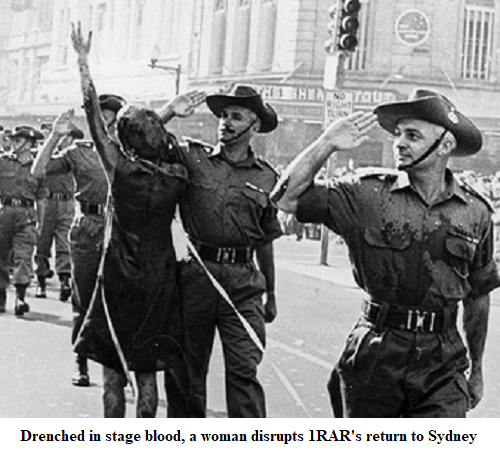 ‘A Respectable Rebellion’ Almost overnight, anti-war activism had become “a respectable rebellion … Two years earlier, ‘draft dodgers’ were condemned as cowards and un-Australian; in 1969 they were seen as local heroes”. After Tet and the turmoil of 1968, the anti-war and radical student movements moved into a ‘second phase’ of mass radicalization and mobilization. By 1970 anti-war moratoriums were drawing crowds of up to 80,000 protesters in cities around Australia, and the anti-war movement had developed a strong leadership and a radical ideology that would go on to shape Australian politics and culture for decades.
‘A Respectable Rebellion’ Almost overnight, anti-war activism had become “a respectable rebellion … Two years earlier, ‘draft dodgers’ were condemned as cowards and un-Australian; in 1969 they were seen as local heroes”. After Tet and the turmoil of 1968, the anti-war and radical student movements moved into a ‘second phase’ of mass radicalization and mobilization. By 1970 anti-war moratoriums were drawing crowds of up to 80,000 protesters in cities around Australia, and the anti-war movement had developed a strong leadership and a radical ideology that would go on to shape Australian politics and culture for decades.
Overall, the horror of the war and the terror at being consumed by it had a massive impact on the BBG and their attitude to the parents’ generation.
Impact on the Baby Boomers Overall, the horror of the war and the terror at being consumed by it had a massive impact on the BBG and their attitude to the parents’ generation:
The most important social and cultural consequence in Australia of the Vietnam War was the development of a Counter-Culture in the Sixties … A spirit of generational protest had been brewing … but the youthful protesters at universities and in the moratorium marches were rejecting more than the Vietnam War: being ‘against Vietnam’ implied a blanket rejection of almost everything associated with the world of their parents. — Bruce Bennett, Literary Culture Since Vietnam, 1998
Radical Mobilization Consequently, the years around 1968 saw “the transformation of the universities from relatively secluded centres of learning into sites of real political conflict, and of successful radical political mobilization.” (Andrew Milner, Radical Intellectuals: an Unacknowledged Legislature, 1988) “Through confrontations, demonstrations, direct action, influence through student newspapers, broadsheets, etc., the radical core has ‘detonated’ … mass student interest”, in the political agenda of the radical left. (Warren Osmond, Student Revolutionary Left, 1970)
A Fundamental Cultural Split Increasingly, as the Sixties unfolded, commentators spoke of “a new kind of split” in Australian society. On one side was the conservative establishment which had come to power in the aftermath of the Great Depression and the War and adhered to the elements of mainstream Australian culture as it continued the project of nation-building, exemplified by the Snowy Mountains Scheme. On the other side was the increasingly vocal and influential Adversary Culture, led by an Intelligentsia which believed it saw “so many shortcomings in Australian social development”, exemplified by the Vietnam War, that it felt itself driven to “the point of despair”. (Edwards, A Nation at War)
Failure & Despair This was intensified when the Australian people ignored the radicals and their anti-war campaign and re-elected the Coalition, led by Harold Holt (below) in 1966 with an increased majority, and then did so again in 1969 at a time when radical expectations were very high. “For many opponents of the Government the election result came as an unexpectedly cruel blow. The constant uproar of public demonstrations had led many people on the left to confuse the depth of [their] feeling with its breadth” amongst the masses. (Edwards, A Nation at War) The devastating effect of this failure on the BBG was mercilessly depicted in the play (and subsequent film) Don’s Party (1971) by David Williamson.
Hegemony This was a pivotal moment: the Intelligentsia and the Adversary Culture sought desperately to explain the chasm between their strongly held moral beliefs and the contrary concerns of the masses. Quickly, the theory of ‘hegemony’ was adopted. First developed by the Italian Marxist, Antonio Gramsci in the 1920s, the theory insisted that a capitalist society like Australia was so deeply influenced of the ideology of the ruling class and its American mentor that the masses were incapable of comprehending the reality of the world or of acting outside or against the interests of capitalism and American imperialism.
All human desires were manipulated, and the lives of the masses were programmed by their masters.
A Pseudo-World A prominent example of this type of analysis portrayed Australia in the Sixties as a “a pseudo-world … so alienated that people do not recognize their aims and goals as false ones”. All human desires were manipulated, and the lives of the masses were programmed by their masters. Australians were puppets of capitalism, zombies whose “life is reduced to monotonous routine [controlled] from outside, a pseudo-life in which the question of individual self-realization does not even figure. People live conditioned, unconscious lives, reproducing the values of the [capitalist] system as a whole.” The ordinary interests of Australian folk (work, sport, beer, the family, the car, the beach, the house, the garden, etc.) served only to hide “the emptiness these people would experience inside if they were not so frantically involved in [mindless] activity”. (Douglas Kirsner, ‘Domination and the Flight from Being’, 1972)
Inner Logic This brief summary of events and cultural phenomena leads us to the ‘inner logic’ of the Sixties. It was characterized by two tendencies. On one hand, there was widespread hope and optimism, especially amongst the masses. On the other hand, there was a sense of betrayal and alienation from the status quo, and profound suspicion of all its institutions and values. This was especially acute amongst the Intelligentsia and the Adversary Culture. A pervasive sense of suspicion, irony and absurdity spread throughout literature, cinema, TV, art, and culture.
Ongoing Tension As the Sixties faded away the BBG was absorbed into mainstream society. Once there, they adjusted to the system, got jobs and started families, although many remained loyal to the ideals of the Sixties, and even pursued them. And ultimately, the underlying mood of alienation, suspicion, and ironic detachment never dissipated, especially amongst the Intelligentsia, which increasingly dominated education, culture, and the media, and which saw itself pursuing a ‘counter-hegemonic’ political role. The paradox of hope and fear, allegiance and alienation, which tore through the Sixties has never been resolved and the tension remains, fundamentally shaping contemporary politics and culture, as we see around us every day.
